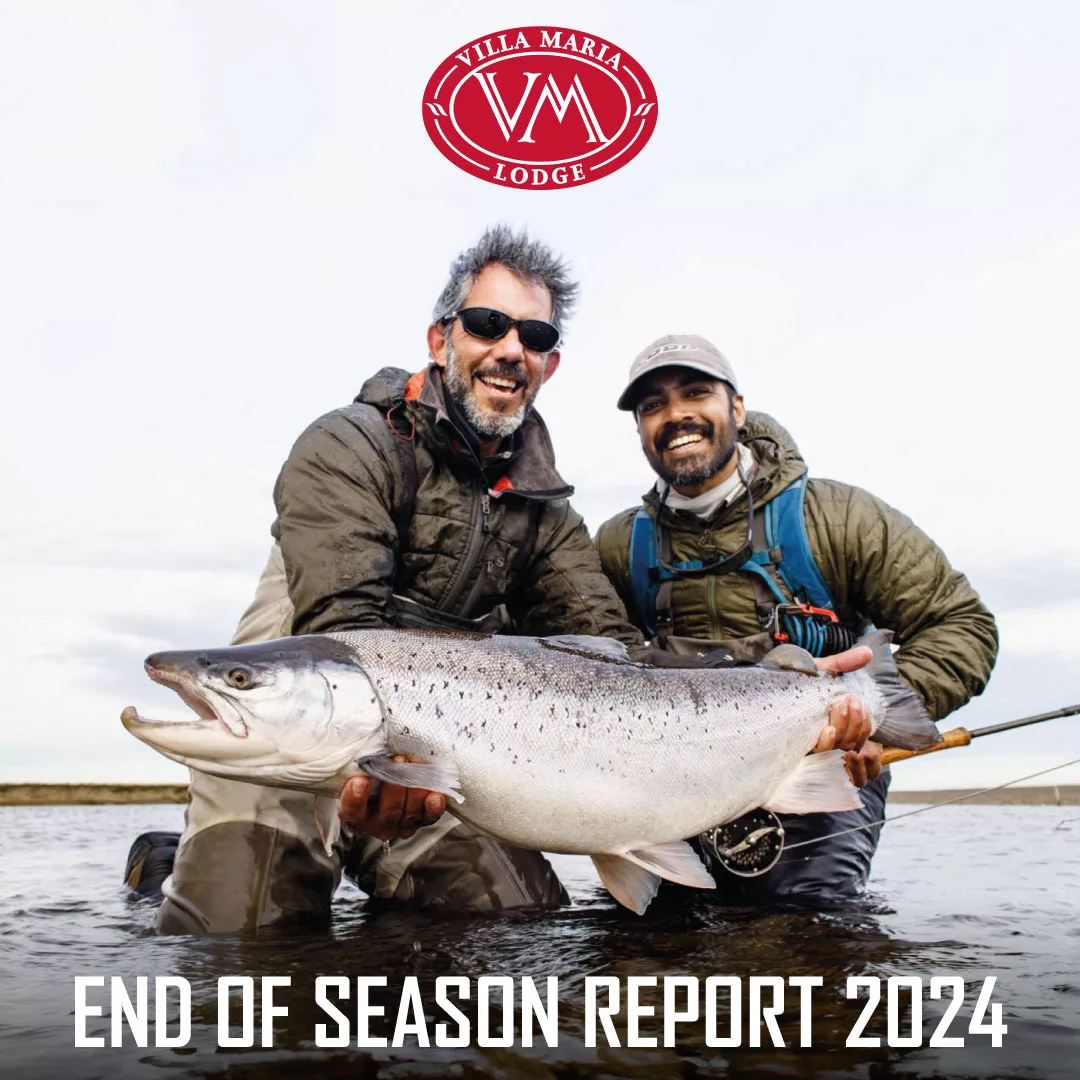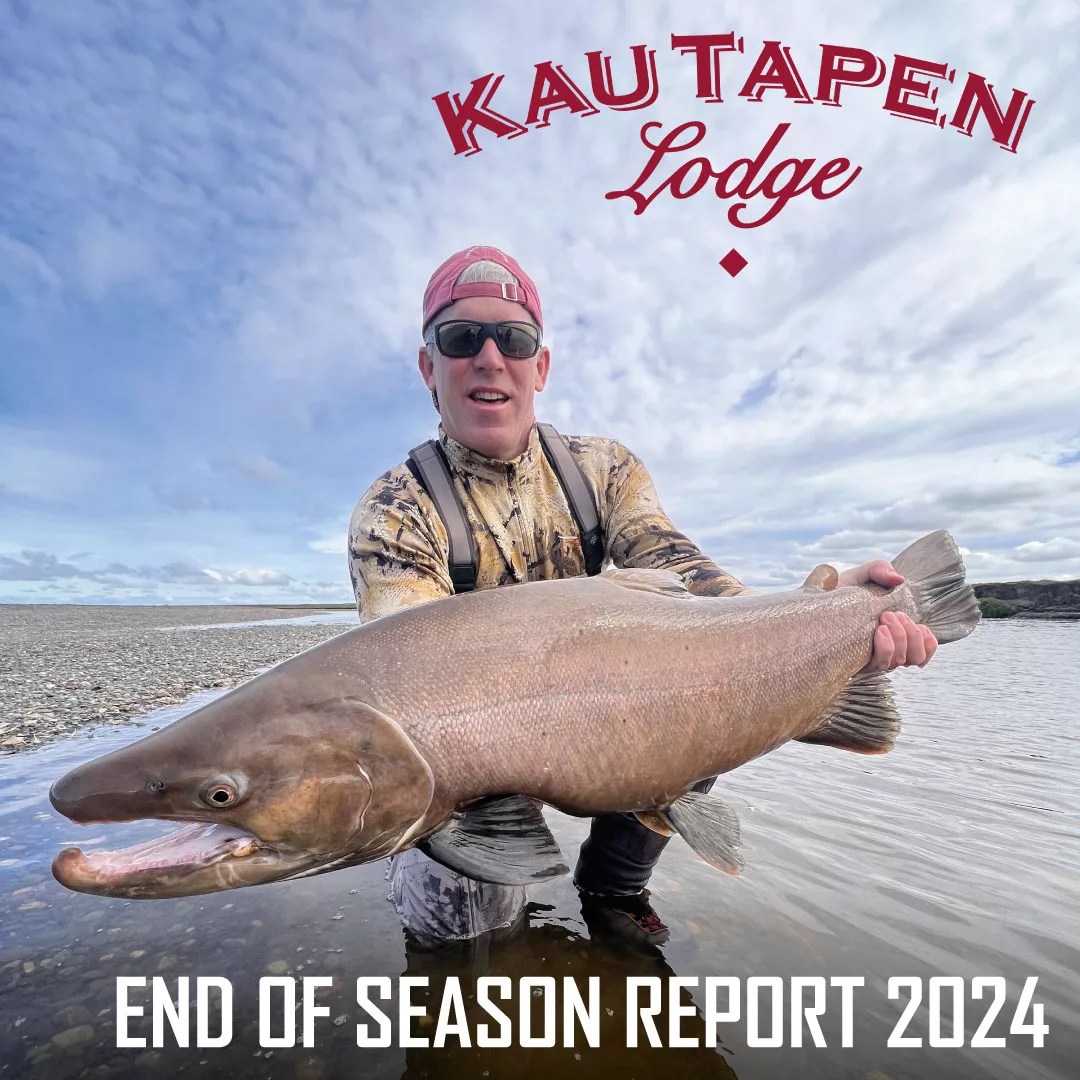Every reputable and well-managed fishing lodge stocks flies for their guests. Usually the guides tie flies in their spare time and sell them to make a few extra dollars, pesos, rubles, krona, or whatever. It works for everyone’s mutual benefit. If you don’t tie, are pressed for time, or simple don’t know what to whip up at the bench; this might be the best option.
Some folks don’t tie flies themselves, but just can’t leave home without an amply stocked box, custom prepared for their destination. No problem; consider plan B. On the Internet, by reading blogs, discussion threads, and browsing websites, you can discover and learn what flies work for when and where you are going. Don’t forget or ignore the very important ‘when” of this matter. Early season flies can be very different than late season requirements. Keep that in mind. So when you figure out the flies you need, you can then buy them, also online, unless you are lucky enough to live close to an international fly shop.
A few years back I stocked up at The Urban Angler in New York City. I stopped over in New York on my way to Belize for my very first bonefishing adventure. While in the Big Apple I decided to sample the local saltwater angling potential. I went to the store for flies and some local expert advice. Not only could I buy local favorites but also patterns for major fishing destinations all over the planet. I stocked up on Gotchas, Puffs, Crazy Charlies, and the like. This plan can work out quite well, and you can still buy more flies at the camp, lodge, or destination.
Plan C is my typical modus operandi. I like to tie my own flies and that’s what I always do. That said, I will also buy some flies at my destination or in an international fly store if I happen by one. I suppose you could say that I’m a plan C man with a bit of A and B sprinkled in for good measure. It pays to respect local experience and purchase a few flies to boost ones confidence.
Why do I tie my own offerings of fur, feather, and tinsel, when I could easily buy tried and true flies tied by expert guides or professional tiers with tons of experience? Do I really think I can do a better job of tying up patterns for the Rio Grande than the guys and gals who have guided and fished there for many years? No is the answer. But I am a fly tier, and for me and many other anglers it is a huge part of the fun and passion associated with fly fishing. I was thrilled when I caught my first Atlantic salmon at 8 years old. I was just as excited all over again when I snagged a lovely silver hen on a Blue Charm that I tied myself. At that time I was 16 and I’ve never looked back from the vise and bobbin.
The guides know what’s best. These are words to live by, I certainly agree. So my Plan C is to gather all the best information on flies from the guides and local experts, and then tie up the patterns myself. Don’t get the notion that this is a cheaper option than buying finished flies. By the time you purchase and gather materials that you might not already possess, it could be much more economical to go with a 100% plan A approach. I ordered up a bunch of new materials and specific super strong hooks for the Rio Grande and it wasn’t cheap. But for me it is worth it. I’m busy now tying up Rubber Legs, Sunray Shadows, and oversized Leaches. I’m loving it. Soy amante de ella. I can’t wait to sink steel into the jaw of a massive seatrout. Even better if it’s a fly from my bench.
You must always use flies that the guide recommends, either from your own box or elsewhere. This is a good policy and will ensure you catch fish, but the exceptions to this rule are oh so exciting. Please indulge me in a story from the Emerald Isle.
Myself and my wife went along on a bus tour with a musical group that was performing at various locations around Ireland. Our daughter sang with the group of traditional players. My homeland, that’s Newfoundland, has a strong Irish flavour to its culture and music. As you likely are well aware both seatrout and salmon are native to Ireland. Did I bring along my fly rod, waders and flies? Affirmative. I never board an airplane without them.
I planned to fish at three locations along the tour route, River Blackwater, the Kerry area in general, and Ballynahinch Castle in the Connemara region of County Galway. The later is a very old and established fishing estate, quite nestled in the Twelve Bens Mountain Range and strong Irish angling tradition. There’s no problem to research what flies to use, and I did so. Not unlike flies for the Rio Grande, Irish seatrout flies are no guarded secret. So I tied up some of the local favorites for trout and salmon. For trout I tied the Bloody Butcher, Silver March Brown, Donegal Blue, Connemara Black, and other proven killers. I was ready for action.
Some might say I think too much about trout. Well, I got to doing some serious contemplating about the sea run brown trout. They are native to Ireland, so naturally there is a long and colorful list of flies fit for casting. Those Irish folks have been playing the game for centuries, before Europeans even set foot in the new world. But we in the new world, Newfoundland and Argentina for example, have created our own killer patterns for seatrout. We still use some of the old tried and true favorites, but lots of new patterns have certainly emerged from the benches of both North and South American anglers. Might many of those also produce results in the home waters of the wary seatrout. I think there is much to be gained from experimentation and using flies from different regions, an exchange of angling culture so to speak.
There’s a particularly deadly fly that we use here in Newfoundland, one that a well-heeled local angler would never wet waders without. It was invented by Paul Kearley, a good friend of mine, keen seatrout angler, expert fly tier, and outstanding rod builder. He named the fly simply, The Pearl, after it’s main ingredient, pearl colored Mylar ribbing. It’s dead simple to tie, just a pearl Mylar body followed by a collar hackle of black hen neck. There are a few devil in the details sort of pointers I can share. Build up the body underneath the pearl Mylar with white floss, preferably to a nice symmetric cigar shape. The bulk I think gives the trout more to look at. The cigar profile is for me. I love good cigars, and take great pleasure in presenting fish with cigar shaped bodies. I doubt if hungry trout really care much.
I tied up a dozen specimens of The Pearl and arranged them neatly in the bottom row of my Irish seatrout box. I wanted to know if it would trick Irish trout. At Ballynahinch I was treated to fishing a full day with the estate fishery manager Simon Ashe. Simon is a very professional guide and an outstanding angler. We wadered up and took up positions on a lovely stretch of seatrout water. I tied on The Pearl, likely its first swim in Old World waters. On the first cast a plump silver trout grabbed my fly. I was off to a great start, and my luck continued. I caught trout after trout in the 12 to 16 inch range. Wow, they loved Paul Kearley’s Pearl. I was out fishing Simon by three or four to one. He queried my offering. I gave him a Pearl and his fishing improved dramatically. I ended up leaving the full row with him. The Pearl, tied on a very stout hook is already in my Rio Grande fly box. We will see what happens. The extra strong stout hook is for my 20 pound seatrout, that’s if the angling gods deem me worthy.
Paul Smith


